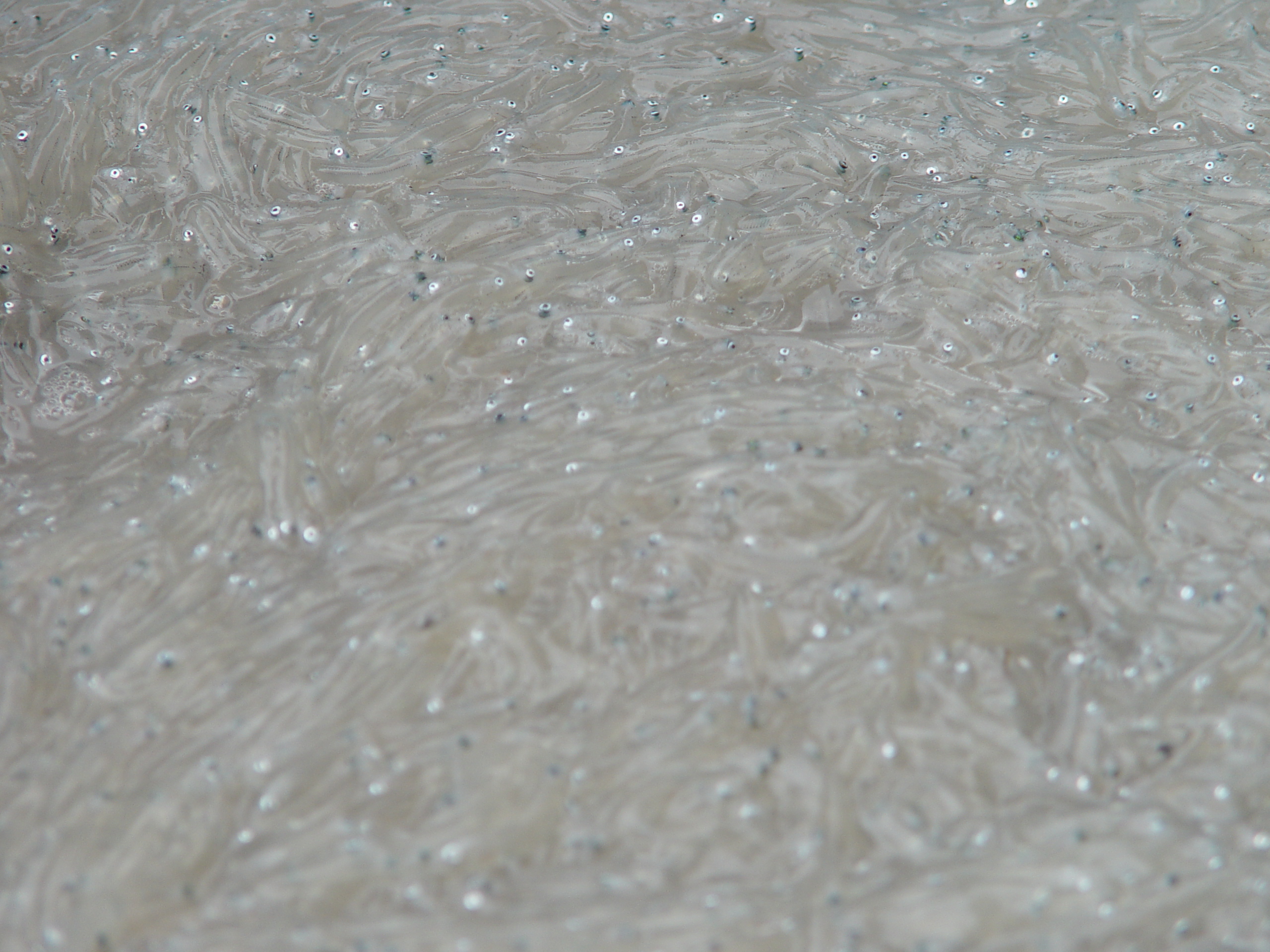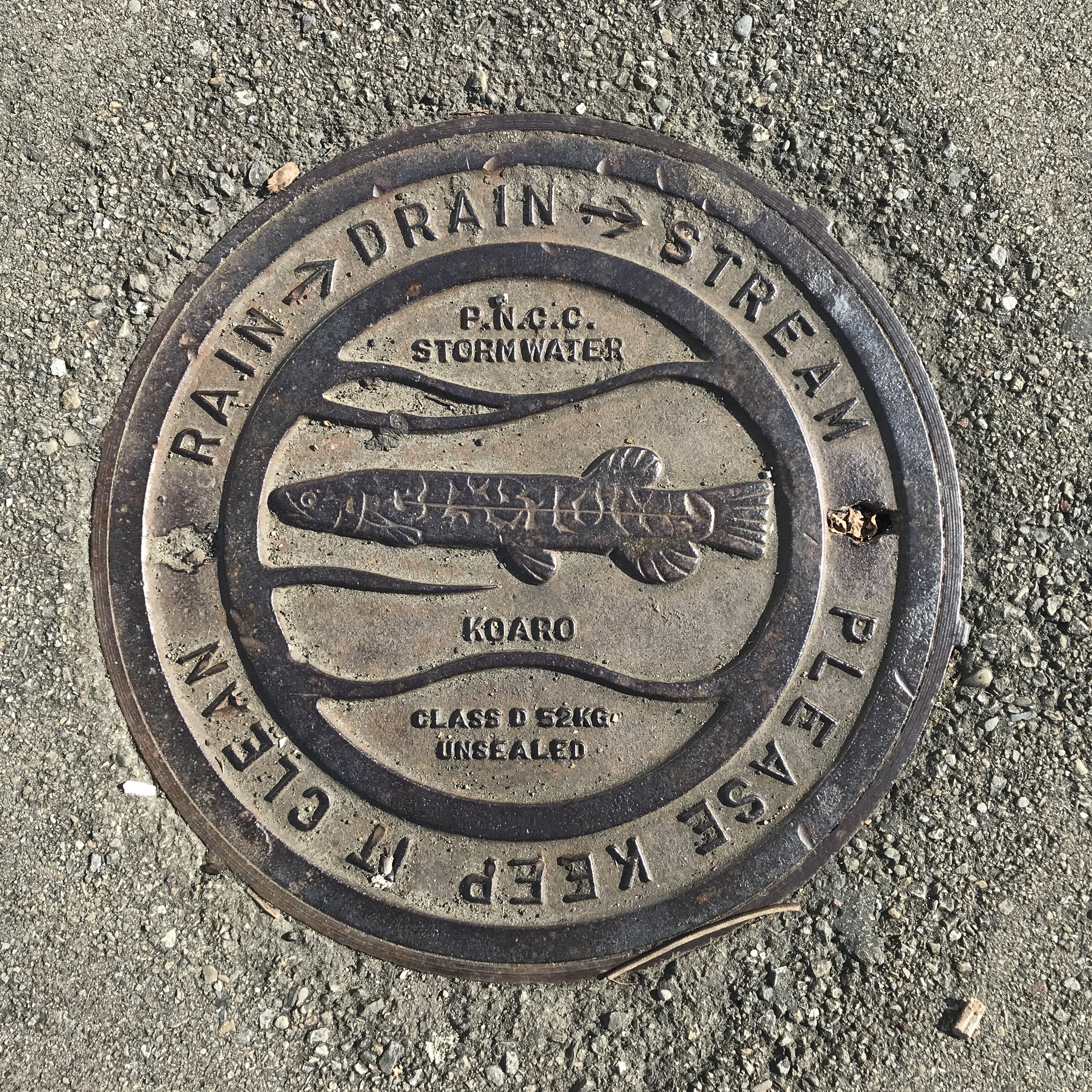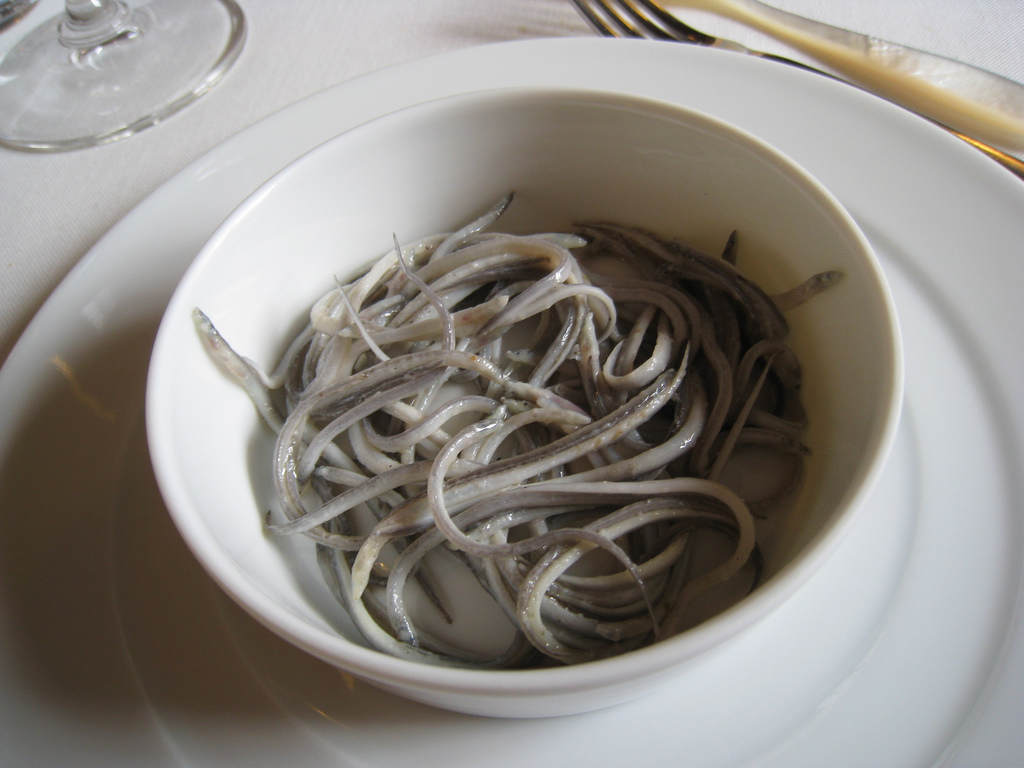|
Whitebait
Whitebait is a collective term for the immature fry of fish, typically between long. Such young fish often travel together in schools along coasts, and move into estuaries and sometimes up rivers where they can be easily caught using fine-meshed fishing nets. Whitebaiting is the activity of catching whitebait. Individual whitebait are tender and edible. The entire fish is eaten — including head, fins, bones, and bowels. Some species make better eating than others, and the particular species that are marketed as "whitebait" vary in different parts of the world. As whitebait consists of immature fry of many important food species (such as herring, sprat, sardines, mackerel, bass and many others) it is not an ecologically viable foodstuff and several countries impose strict controls on harvesting. Whitebait by region Alboran Sea The Alboran Sea is the westernmost element of the Mediterranean Sea. Whitebait have been consumed as a favoured element of the diet of peoples l ... [...More Info...] [...Related Items...] OR: [Wikipedia] [Google] [Baidu] |
Tasmanian Whitebait
The Tasmanian whitebait (''Lovettia sealli''), also known as the Australian whitebait or Derwent whitebait, is a semi-anadromous ray-finned fish of the family (biology), family Galaxiidae, found only in Tasmania and southern Victoria (Australia), Victoria, Australia. It is the Monotypic taxon, only species in the genus ''Lovettia''. Naming Scottish naturalist Robert Mackenzie Johnston described the species in 1883 as ''Haplochiton sealii''. Calling it the Derwent smelt, he observed that it appeared in numbers in the upper River Derwent (Tasmania), Derwent near New Norfolk, Tasmania, New Norfolk in October and November. Allan Riverstone McCulloch placed it in the genus ''Lovettia'' in 1915, describing it from specimens collected by a Mr Lovett from the Derwent River. Originally named Tasmanian whitebait the species was renamed Australian whitebait following the discovery of a population in southern Victoria on the Australian mainland in 1993. It is the only species of its genus ... [...More Info...] [...Related Items...] OR: [Wikipedia] [Google] [Baidu] |
Climbing Galaxias
The climbing galaxias or kōaro (''Galaxias brevipinnis'') is a fish of the family Galaxiidae found in Australia, New Zealand, and nearby islands. The name climbing galaxias is used in Australia, and koaro or kōaro in New Zealand. Further vernacular names include short-finned galaxias, broad-finned galaxias, Cox's mountain galaxias, and Pieman galaxias. Appearance The climbing galaxias is unlikely to be confused with the other diadromous whitebait species because of its shape. It is elongated and slender, shaped almost like a tube. The sides and back are covered in a variable pattern of golden blotches and bands that gleam and glitter in the sun, making the climbing galaxias an attractive fish. Their maximum size is around 29 cm, but they commonly reach 16–18 cm. Lifestyle These fish live a basically benthic lifestyle and in most respects behave like the common galaxias, a closely related galaxiid. They inhabit mainly clear streams, often deeply shaded and relat ... [...More Info...] [...Related Items...] OR: [Wikipedia] [Google] [Baidu] |
Fry (biology)
Fish go through various life stages between fertilization and adulthood. The life of fish start as spawned eggs which hatch into immotile larvae. These larval hatchlings are not yet capable of feeding themselves and carry a yolk sac which provides stored nutrition. Before the yolk sac completely disappears, the young fish must mature enough to be able to forage independently. When they have developed to the point where they are capable of feeding by themselves, the fish are called fry. When, in addition, they have developed scales and working fins, the transition to a juvenile fish is complete and it is called a fingerling, so called as they are typically about the size of human fingers. The juvenile stage lasts until the fish is fully grown, sexually mature and interacting with other adult fish. Growth stages Ichthyoplankton ''(planktonic or drifting fish)'' are the eggs and larvae of fish. They are usually found in the sunlit zone of the water column, less than 200 me ... [...More Info...] [...Related Items...] OR: [Wikipedia] [Google] [Baidu] |
Tasmanian Mudfish
The Tasmanian mudfish, ''Neochanna cleaveri'', is a small Australian amphidromous ray-finned fish in the family Galaxiidae. Distribution ''Neochanna cleaveri'' is found in coastal wetlands of south eastern Australia: around Tasmania, Flinders Island in Bass Strait and southern Victoria particularly Wilsons Promontory.R.M. McDowell, 1986. ''Freshwater Fishes of South East Australia'' (Rev Ed) Reed Books Australia, Sydney, pages = 64–65 0-7301-0462-1 Isolated populations occur in the Otways, near Geelong and Melbourne in Victoria, as well as in far eastern South Australia near Naracoorte. The fish's range has been significantly reduced, especially in Victoria, due to destruction of suitable habitat through human activity such as swamp reclamation and drainage. Description Typically galaxiid in form, scaleless, with an elongated, tubular body, and moderately sized mouth, it may be distinguished from other galaxiid species by the small eye and the blunt, rounded head shap ... [...More Info...] [...Related Items...] OR: [Wikipedia] [Google] [Baidu] |
Galaxiid
The Galaxiidae are a family of mostly small freshwater fish in the Southern Hemisphere. The majority live in Southern Australia or New Zealand, but some are found in South Africa, southern South America, Lord Howe Island, New Caledonia, and the Falkland Islands. One galaxiid species, the common galaxias (''Galaxias maculatus''), is probably the most widely naturally distributed freshwater fish in the Southern Hemisphere. They are coolwater species, found in temperate latitudes, with only one species known from subtropical habitats. Many specialise in living in cold, high-altitude upland rivers, streams, and lakes. Some galaxiids live in fresh water all their lives, but many have a partially marine lifecycle. In these cases, larvae are hatched in a river, but are washed downstream to the ocean, later returning to rivers as juveniles to complete their development to full adulthood. This pattern differs from that of salmon, which only return to fresh water to breed, and is describ ... [...More Info...] [...Related Items...] OR: [Wikipedia] [Google] [Baidu] |
Common Galaxias
The common galaxias (''Galaxias maculatus'') or inanga (from the Māori language, Māori ''īnanga'' or ''īnaka'') is a species of ray-finned fish from the family Galaxiidae that is widespread in the Southern Hemisphere. It is fish migration, migratory, living in fresh water but spawning at river mouths, spending the first six months of its life at sea, and returning ''en masse'' in spring. Its vernacular names include cowfish, jollytail, common jollytail, eel gudgeon, inaka, native trout, pulangi, puye, slippery tarki, spotted minnow, Falklands minnow and whitebait. Description Common galaxias is a slim, narrow fish with a mottled, spotty pattern, iridescent silver eyes, undersides and gill covers, and some individuals have an iridescent green stripe along the top of their bodies which can be intermittently seen as they swim. Their specific name (zoology), specific name ''maculatus'' ("spotted") comes from the pattern of dark-mottled, leopard-like spots on an olive-brown back ... [...More Info...] [...Related Items...] OR: [Wikipedia] [Google] [Baidu] |
Gianchetti And Poutine
Gianchetti (also bianchetti, poutine in Nice, nonnat in Provence) are the whitebait of fish of the Mediterranean (sardines and anchovies, etc.), caught with special nets in the early months of the year. The relatively low catch means that the prices at market are rather high, even in comparison to other whitebait. Since the 1990s frozen gianchetti have also been available. A speciality of the Ligurian cuisine and Provençal cuisine, gianchetti are generally lightly boiled in salted water and served hot, dressed with oil and lemon juice; another classic approach is to make fritters of the fish together with an egg and flour batter; finally they may simply be dipped in flour and deep fried. In Provence they are also used to make a traditional soup or omelettes. The gianchetti of a red colour (''ruscetti'', ''rossetti'') are tougher and scaly to the palate: they are largely used to flavour fish-based sauces. Gallery File:Le mani del pescatore.jpg, alt=, File:Reti da pesca.jpg ... [...More Info...] [...Related Items...] OR: [Wikipedia] [Google] [Baidu] |
Spotted Galaxias
Spotted galaxias (''Galaxias truttaceus'') is a largish, primarily-freshwater galaxias species found in southern Australia. They are a somewhat tubular, deep-bodied fish, with a dusky brownish-red colouration overlain with dark, haloed spots, dramatic black edges to dorsal, anal and pelvic fins, and a dark diagonal stripe through the eye. Distribution Spotted galaxias has a very wide distribution, being found in southern Victoria, all of Tasmania, offshore islands in between, as well as south-west Western Australia. On the mainland spotted galaxias is generally recognised as a freshwater fish species with a marine larval phase (larvae are swept out to sea and return to freshwater habitats as early stage juveniles), and thus only found in coastal rivers. Spotted galaxias are generally found in coastal rivers in Tasmania as well, however natural landlocked populations do occur in some freshwater lakes in Tasmania. Spotted galaxias were assumed not to be native to the Murray-D ... [...More Info...] [...Related Items...] OR: [Wikipedia] [Google] [Baidu] |
European Sprat
The European sprat (''Sprattus sprattus''), also known as brisling, brisling sardine, bristling, garvie, garvock, Russian sardine, russlet, skipper or whitebait, is a species of small marine fish in the herring family Clupeidae. Found in European, West Asian and North African waters, it has silver grey scales and white-grey flesh. Specific seas in which the species occurs include the Irish Sea, Black Sea, Baltic Sea and Sea of the Hebrides. The fish is the subject of fisheries, particularly in Scandinavia, and is made into fish meal, as well as being used for human consumption. When used for food it can be canned, salted, breaded, fried, boiled, grilled, baked, deep fried, marinated, broiled, and smoked. Taxonomy This fish was first described by Carl Linnaeus in 1758 in the 10th edition of Systema Naturae. He called it ''Clupea sprattus'', but it was later transferred to the genus '' Sprattus''. Three subspecies are recognised; ''S. sprattus balticus'' from the Baltic Sea; ''S ... [...More Info...] [...Related Items...] OR: [Wikipedia] [Google] [Baidu] |
Sardine
Sardine and pilchard are common names for various species of small, oily forage fish in the herring suborder Clupeoidei. The term "sardine" was first used in English during the early 15th century; a somewhat dubious etymology says it comes from the Italian island of Sardinia, around which sardines were once supposedly abundant. The terms "sardine" and "pilchard" are not precise, and what is meant depends on the region. The United Kingdom's Sea Fish Industry Authority, for example, classifies sardines as young pilchards. One criterion suggests fish shorter in length than are sardines, and larger fish are pilchards. The FAO/ WHO Codex standard for canned sardines cites 21 species that may be classed as sardines. FishBase, a database of information about fish, calls at least six species pilchards, over a dozen just sardines, and many more with the two basic names qualified by various adjectives. Etymology The word ''sardine'' first appeared in English in the 15th cen ... [...More Info...] [...Related Items...] OR: [Wikipedia] [Google] [Baidu] |
Italian Cuisine
Italian cuisine is a Mediterranean cuisine#CITEREFDavid1988, David 1988, Introduction, pp. 101–103 consisting of the ingredients, recipes, and cooking techniques developed in Italy since Ancient Roman cuisine, Roman times, and later spread around the world together with waves of Italian diaspora. Significant changes Columbian exchange, occurred with the colonization of the Americas and the consequent introduction of potatoes, tomatoes, capsicums, and maize, as well as sugar beet—the latter introduced in quantity in the 18th century. It is one of the best-known and most widely appreciated Gastronomy, gastronomies worldwide. Italian cuisine includes deeply rooted traditions common throughout the country, as well as all the diverse Regional cuisine, regional gastronomies, different from each other, especially between Northern Italy, the north, Central Italy, the centre, and Southern Italy, the south of Italy, which are in continuous exchange. Many dishes that were once region ... [...More Info...] [...Related Items...] OR: [Wikipedia] [Google] [Baidu] |
Liguria
Liguria (; ; , ) is a Regions of Italy, region of north-western Italy; its Capital city, capital is Genoa. Its territory is crossed by the Alps and the Apennine Mountains, Apennines Mountain chain, mountain range and is roughly coextensive with the former territory of the Republic of Genoa. Liguria is bordered by France (Provence-Alpes-Côte d'Azur) to the west, Piedmont to the north, and Emilia-Romagna and Tuscany to the east. It rests on the Ligurian Sea, and has a population of 1,509,908 as of 2025. The region is part of the Alps–Mediterranean Euroregion. Etymology The name ''Liguria'' predates Latin and is of obscure origin. The Latin adjectives (as in ) and ''Liguscus'' reveal the original root of the name, ''ligusc-'': in the Latin name -sc- was shortened to -s-, and later turned into the -r- of , according to rhotacism (sound change), rhotacism. Compare whence . The name derives from the ancient Ligures people, although the territory of this people was much larger th ... [...More Info...] [...Related Items...] OR: [Wikipedia] [Google] [Baidu] |




